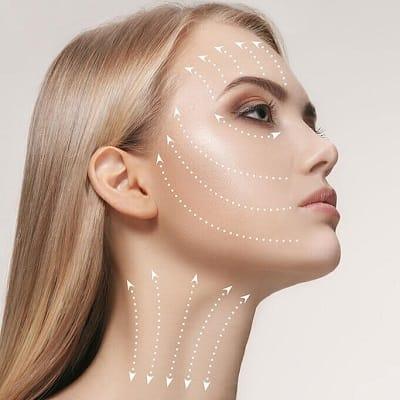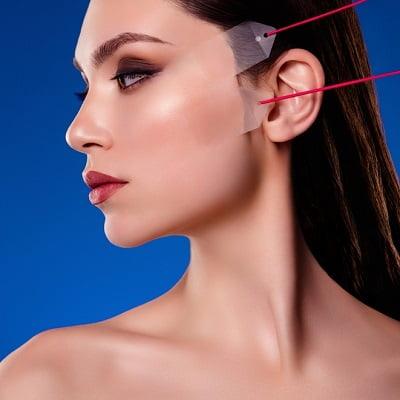Thread lift procedures in Islamabad are safe and relatively painless designed to lift and firm the skin and enhance the appearance without surgery. The threads encourage the formation of collagen thus making the skin firm after some time has elapsed. One common complaint of patients is the thread snapping problem after the treatment is completed. In this Blog, you will Find out, how the thread breaks, how this influences the results, and what to do, if this occurs.
Why Does Thread break After a thread lift?
However, in some cases, threads can break due to various factors:
Excessive Movement or Pressure:
Patients need to pay attention to post-treatment therapies to get the best results of a threat lift. Precautions that need to be taken for at least 5 days are hard rubbing the face, chewing roughly, or excessive intake of carbohydrates. and they snap.
Weak or Thin Skin:
People with very thin or weak skin may also be at risk of having threads break. The threads are anchored to the skin so when the skin is not strong it may not hold the threads just as well as skin that is firm.
Low-Quality Threads:
Quality is also very important when it comes to thread lift procedures. The ultimate concern is that inferior thread materials may break easily, and this requires patients to get treatment from the best clinics, from professional Aesthetic physicians using high-quality products.
Signs of Thread Breakage
Some of the symptoms that may show that a thread has pulled out after a thread lift is as follows. Here are some common signs of thread breakage:
Uneven Skin or Lumps:
Other incidences of thread breakage include an uneven skin surface or the formation of small lumps on the treated area. Such a warp may be formed at a place that has been twisted or held together due to a broken thread.
Reduced Lift:
Should one or more threads snap, there can be an irregular or droopy look to the skin in the treated area, which is not desirable.
Discomfort or Pain:
Although thread lifts are generally only slightly painful, the possibility of having broken threads causes itchiness, slight tenderness, or discomfort when the threads move in the skin.
What to Do if Threads Break?
Here are some steps to consider if you suspect that a thread has broken:
Consult Your Aesthetician:
Each time you experience any odd signs that something is wrong or if there is a feeling that a string has snapped, consult the aesthetician immediately. It will then allow them to analyze the context and decide what has to be done next.
Minor Adjustments:
An aesthetician can manipulate it a little to correct mistakes instead of completely removing the thread. This involves gently rubbing the area to help the skin recover and pave the way for even distribution or if the broken thread is irritating the skin layers.
Thread Replacement:
In a case where a particular thread is damaged and it considerably affects the overall lift or beauty, your provider will advise you to undergo re-treatment. In this procedure, we replace only one thread, making it relatively simpler than the first one, and achieve the desired outcomes.
Allow for Healing:
Skin in many cases continues to produce collagen around the threads even if one of the breaks is formed.
Consider Alternative Treatments:
If thread breakage is frequent or the results are not meeting your expectations, discuss alternative treatment options with your aesthetician. Procedures like fillers, laser treatments, or even a traditional facelift may provide more long-term results, especially if thread lifts are not yielding the desired outcome.
How to Prevent Thread Breakage
Taking a few preventive measures after your thread lift can greatly reduce the chances of experiencing thread breakage. Here’s how to care for your skin post-treatment:
Aftercare Instructions:
You should avoid engaging in physical activities such as exercises, chewing hard foods, and massaging your face for about three weeks after the treatment.
Avoid Excessive Facial Movements:
Minimize any expression on your face especially if you just underwent a thread lift procedure within the first one to two weeks. Of course, this doesn’t exclude smiling and talking, but sudden or vigorous movements.
Sleep on Your Back:
If you sleep on your side or stomach, you risk placing pressure on the treated area, which may disturb the threads. Sleeping on your back for the first few weeks post-treatment can help avoid any unnecessary strain.
Healthy Skin:
Apply moisturizer and sunscreen together that can boost the production of collagen enhance the steadiness of the skin.
Is Thread Breakage Common?
An experienced professional following the proper aftercare procedures reduces the occurrence of thread breakage. Most patients do not experience thread breakage, and those who do may only notice minor effects. For most, any breakage does not significantly impact the outcome due to the ongoing collagen-stimulating benefits of the threads.
Final Thoughts:
Despite this, threads breaking after a thread lift treatment is not always bad although requires proper management. If there is a breakage of the threads, you can make corrections by making minor adjustments or replacing the threads.
If you need a thread lift, find the best clinic in Islamabad at Enfield Royal Clinics, and visit for the treatment. Dr. Maryam Malik, our best aesthetic physician, undergoes a thread lift procedure without the fear of thread snapping after the treatment.







Leave a Reply